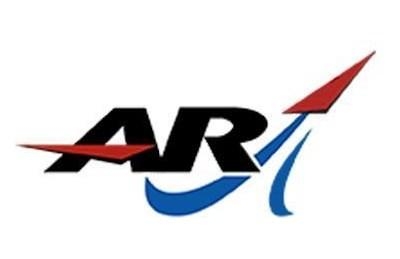Wed, Jun 26, 2019
Green Propellant Infusion Mission (GPIM) Will Demonstrate In Space For The First Time A New Non-Toxic Propellant
Aerojet Rocketdyne, along with NASA, Ball Aerospace and the Air Force Research Laboratory (AFRL), is helping usher in a new era of small satellite propulsion through the Green Propellant Infusion Mission (GPIM). On June 24, a Ball Aerospace small satellite was launched from NASA’s Kennedy Space Center in Cape Canaveral, Florida. The spacecraft will conduct a 13-month demonstration of a revolutionary “green” propellant developed by the AFRL, called AF-M315E.

Powered by this green propellant, Aerojet Rocketdyne’s green propellant propulsion system will enable the spacecraft to execute and demonstrate orbital maneuvers in space. The system includes five 1-newton thrusters: four for attitude control and one for orbit maneuvering. This will be the first space-based demonstration of Aerojet Rocketdyne’s green propulsion technology utilizing AF-M315E propellant.
“Aerojet Rocketdyne has provided trusted and reliable in-space propulsion to industry, government and commercial partners since the beginning of the space age,” said Eileen Drake, CEO and president of Aerojet Rocketdyne. “We’re excited to expand upon this legacy with our new green propulsion technology, which will enable increased satellite performance and provide propulsion options to SmallSats that previously weren’t available.”
AF-M315E is a higher performance and environmentally-friendly alternative for chemical propulsion operations that traditionally use hydrazine. Because of its increased density and higher performance, satellites can achieve extended operation timelines and increased maneuverability. Its lower freezing point eliminates the need for added onboard heating systems, resulting in a greater mass allowance for added life. Green propellant is also non-toxic, which enables safe handling of the propellant and simplifies pre-launch processing.
NASA is interested in using green propellant for various next-generation spacecraft and launch vehicles to the Moon, Mars and beyond. Proving this new technology is effective and efficient in space will open the door for green propulsion to become a viable option for future missions. Aerojet Rocketdyne’s green propellant propulsion system was developed at the company’s Redmond, Washington, facility.
(Source: Aerojet Rocketdyne news release)
More News
Airport Marking Aids Markings used on runway and taxiway surfaces to identify a specific runway, a runway threshold, a centerline, a hold line, etc. A runway should be marked in ac>[...]
"It is extremely difficult, if not impossible, for manned aircraft to see a drone while conducting crop-enhancing and other aerial applications at low altitudes and high speeds. We>[...]
Aero Linx: The Skyhawk Association The Skyhawk Association is a non-profit organization founded by former Skyhawk Pilots which is open to anyone with an affinity for the A-4 Skyhaw>[...]
“The T-54A benefits from an active Beechcraft King Air assembly line in Wichita, Kansas, where all required METS avionics and interior modifications are installed on the line>[...]
Aero Linx: Aerostar Owners Association The Association offers the Aerostar Owner a unique opportunity to tap an invaluable source of information concerning the care and feeding of >[...]
 ANN's Daily Aero-Term (04.28.24): Airport Marking Aids
ANN's Daily Aero-Term (04.28.24): Airport Marking Aids Aero-News: Quote of the Day (04.28.24)
Aero-News: Quote of the Day (04.28.24) ANN's Daily Aero-Linx (04.28.24)
ANN's Daily Aero-Linx (04.28.24) Aero-News: Quote of the Day (04.29.24)
Aero-News: Quote of the Day (04.29.24) ANN's Daily Aero-Linx (04.29.24)
ANN's Daily Aero-Linx (04.29.24)



